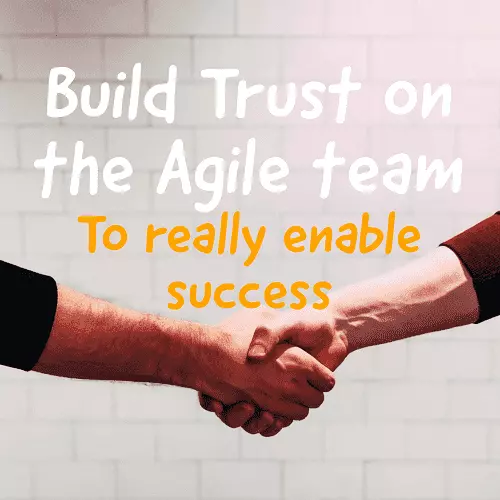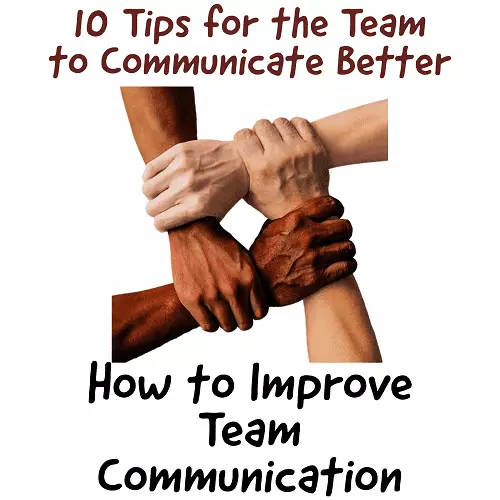
Team dynamics play a huge part in team success. Thus success of the larger organization. But how do you improve these dynamics? What items will help you to improve team dynamics? To build up and enable very successful teams. The following items are the best ways to work on and improve team dynamics.
- High-performing companies rely on this kind of team
- Tips to build up team dynamics and a high performing team
- Embrace conflict, but do so respectfully
- Gain commitment by the team
- Build trust within the team for improved team dynamics
- Promote team solutions
- Be results driven for great team dynamics
- Build accountability for good team dynamics
- Have clear goals that everyone understands
- Share the workload
- Communicate for great team dynamics
- Have fun for the best team dynamics
- Additional content and reading to help improve team dynamics
High-performing companies rely on this kind of team
In the realm of high-performing companies, the engine that propels their success lies in the synergy of their teams’ dynamics. These companies understand that achieving greatness is not the pursuit of individual excellence but the harmonious orchestration of team cohesion. Strong team dynamics within these organizations are more than just a means of collaboration; they are the lifeblood that fuels problem-solving, innovation, and a shared sense of purpose.
At the heart of these robust team dynamics is the cultivation of problem-solving skills that extend beyond the individual realm. When team members collaborate seamlessly, pooling their diverse expertise and viewpoints, challenges are met with a collective intellect that transcends the limitations of a single mind. Mutual respect forms the bedrock upon which these interactions thrive, creating an environment where open communication is encouraged, ideas flow freely, and conflicts are resolved constructively. This confluence of attributes fosters a positive team culture that not only empowers each member but also propels the entire team toward a unified vision.
Within the high-performing company landscape, innovation doesn’t emerge as an isolated spark but rather blazes as a sustained flame, ignited by the creative sparks contributed by each team member. Robust team dynamics not only offer fertile ground for innovation but actively fuel its growth. Ideas take root in an environment rich with trust and collaboration, nurtured by strong team connections. This culture of innovation flourishes when shared goals bind teams together, enabling seamless cooperation in realizing imaginative concepts. These companies’ success transcends mere financial gains; it’s a testament to the transformative impact they engineer, underscoring the profound influence of team dynamics in achieving remarkable outcomes.
Tips to build up team dynamics and a high performing team
Embrace conflict, but do so respectfully
All too often, conflict is avoided on teams. It is a misconception that you should avoid conflict. That is because conflict is how you present new and challenging ideas. How you build and improve ideas as a team. The issue is when conflict is handled in ways that are not respectful. Or conflict becomes negative and unprofessional.
Promote the exchanging and free criticism of ideas. That is how you get to the best solutions as a team. Teams that can discuss and poke holes in ideas, to then try and address the gaps, will come up with the best possible solutions to problems and how to achieve goals.
So promote healthy conflict on the team, to openly discuss and collaborate on the work. This will lead to a team dynamic that uses conflict to it’s advantage, instead of team members using it to discourage and silence others.
Gain commitment by the team
A fundamental requirement is a shared commitment to the task at hand. When each member is fully invested and believes in the work, collective efforts are channeled toward achieving tangible outcomes. People that commit to the work can do amazing work.
Committed team members prioritize the team’s work, infusing each action with heightened significance, focus, and substantiation. On the contrary, lack of commitment is exemplified by team members who aren’t fully engaged or don’t believe in the work’s value. They might allocate their time to other tasks, potentially relegating the team’s objectives to a lower priority. Consequently, their solutions may not be as robust, lacking the conviction that stems from a genuine belief in the work’s purpose.
To foster team member commitment, it’s crucial to effectively communicate the work’s goals, especially how these objectives contribute to the broader company’s mission. Establishing this connection links organizational strategy with the team’s efforts, underscoring the importance and motivating commitment.
Team dynamics thrive on shared commitment. Without it, team members may pursue their individual preferences, lacking a unified purpose.
Build trust within the team for improved team dynamics
Lack of trust within the team can be detrimental. When there’s a dearth of trust, team members hesitate to readily accept and integrate ideas from their colleagues. Moreover, mistrust can lead to duplicated efforts, hampering the team’s delivery speed due to doubts about each other’s contributions.
For more insights on cultivating trust within the team, you can explore the linked article below. It’s vital to recognize that trust plays a pivotal role in the team’s overall success. The foundation of team achievement rests heavily on the bedrock of mutual trust among its members.
Promote team solutions
Great teams and the team relationships within them rely on team built solutions for best success. When team members all bring their combined skills, knowledge and experience, they can build better solutions. Solutions come from all team member roles.
Not to mention that the high performing teams I am discussing are democracies. They are not top down driven. Where maybe one person dictates how to go about doing the work. They work together, and figure out the best way forward together.
Be results driven for great team dynamics
I firmly believe that team dynamics undergo positive transformation and improvement when the team is actively striving for results. While there are undoubtedly processes and lessons that the team needs to acquire, certain aspects will naturally unfold during collaborative work aimed at achieving outcomes.
Furthermore, the absence of a focus on results can trigger a range of issues. Team members might begin to scramble, leading to errors or falling behind schedule. There’s also the risk of duplicated efforts. By prioritizing results, we enhance effective team dynamics and drive improvements.
Build accountability for good team dynamics
In the realm of collaborative endeavors, the dire consequences of avoiding accountability can unravel the very fabric of potent team dynamics. It’s a stark admonition: cast aside the veil of evasion and embrace responsibility with unyielding determination. The symphony of achievement is composed not in isolation but through the harmonious interdependence of each contributor, resonating with the shared goal etched into the team’s core.
Hold your own work aloft, without external interference. Working with this kind of accountability, the team propels the work forward.
However, achieving this transcendence, this realm of unshackled productivity, requires traversing the crucible of accountability. In this realm, the team embraces the mantle of unwavering ownership, wielding it as a sword to cleave through obstacles and as a torch to illuminate the path of innovation. Every step taken toward shared objectives serves as a testament to the team’s unbreakable bond, a testament not composed of mere words, but forged through the crucible of action.
Have clear goals that everyone understands
Carve a path of resolute unity by establishing crystal-clear, comprehended goals that rise as guiding beacons of purpose. Infuse your team with the zeal of shared objectives, breathing vitality into your undertakings. Take it a stride further – dive into spirited discussions that harmonize your endeavors and synchronize your concentration on these aims. This calculated synergy, akin to a finely tuned symphony, orchestrates smoother advancement, morphing daunting challenges into attainable victories.
Nevertheless, be wary of the haze caused by ambiguous objectives, as it shrouds the team’s determination. Amidst it, misguided efforts might sprout, diverting the team off course. The antidote? Illuminate the trail with unequivocal goals, assuring that every step is gauged and steered by a lucid purpose. As the team rallies around these illuminated milestones, confusion disperses, and collective clarity emerges triumphant.
Share the workload
Optimal group dynamics within teams thrive when members collectively shoulder the workload and collaborate to accomplish tasks. When teams break down substantial tasks into smaller segments and distribute them among members, they become better equipped to handle the workload efficiently.
Apart from the acceleration of work completion through distributed efforts, sharing the workload fosters a positive morale boost. Team members collaborating together further enhance and strengthen effective team dynamics. Regardless of roles, the team is responsible for the work they committed to.
Great leadership and teamwork can take you a long ways. So remember the common goals and work together.
Communicate for great team dynamics
Great communication is such a huge part of good team dynamics. Practice all forms of communication. Bring it into your process improvement and make your communication more effective.
Just don’t neglect communication. Communicate to share information and help team members learn. Also communicate to stay in sync and work towards the right things at the right times. It’s such a huge factor and great teams communicate well.
Communication starts with leadership too. They need to share info, how they arrive at decisions and help foster that culture.
Have fun for the best team dynamics
Within the realm of effective team dynamics, the infusion of fun serves as a potent catalyst, elevating the collaborative experience to new heights. Teams that embrace an atmosphere of enjoyment and lightheartedness find themselves not only engaged but energized by their tasks. Laughter becomes the symphony that harmonizes efforts, dissolving barriers and fostering a sense of camaraderie that transcends the mundane. It’s in these moments of shared amusement that team members forge connections, breaking down communication barriers and building a rapport that extends beyond work tasks. Relationships can’t be just about work all the time.
Furthermore, team dynamics gain a fresh surge of energy through the infusion of team-building activities. These engaging activities, spanning from spirited challenges to interactive games and imaginative exercises, interlace a fabric of collective encounters that solidify interpersonal ties. The dynamic engagements within these activities ignite creativity, amplify problem-solving prowess, and foster collaboration within a laid-back ambiance. By actively participating in such ventures, teams not only refine their communication aptitude but also foster a profound appreciation for each member’s unique strengths and idiosyncrasies. Ultimately, the amalgamation of enjoyment and team-building endeavors metamorphoses team dynamics into a thriving ecosystem, where shared delight propels productivity and enduring bonds forged through shared laughter and mutual challenges propel success.
Leadership needs to remember the lighter side of these dynamics. Helping to promote and build a space where that is possible.
Additional content and reading to help improve team dynamics
Effective team dynamics are dependent on so many things. But the ideas above will help to build up those dynamics for more team success. Consider reading up on ideas about building up more trust on the team and ways to improve communication and teamwork. Check them out below.
Create shared goals Creating clear shared goals is essential for rallying the troops and fostering positive team dynamics.
Source: fingerprintforsuccess.com
Teams with inclusive leaders report 150% greater belonging, 140% greater perceived organizational support, 90% higher team innovation, 50% higher team performance, and 140% higher team engagement.
Source: betterup.com


